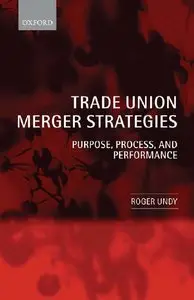Trade Union Merger Strategies: Purpose, Process, and Performance by Roger Undy
English | 2008 | ISBN: 0199544948 | Pages: 320 | PDF | 1,7 MB
English | 2008 | ISBN: 0199544948 | Pages: 320 | PDF | 1,7 MB
As Trade Union membership has declined, union mergers have been prominent features in strategies of revitalization. Yet, there is very little systematic and empirical research into the effects of union mergers on the unions actually merging or of their impact on the wider union movement.
This ground-breaking study fills this gap with its in-depth analysis of British unions' mergers since 1978: the point at which British unions moved from growth into decline, primarily due to adverse and damaging changes in the British industrial relations climate.
Initially the book describes the merger processes (transfers and amalgamations) and the extent of British unions' merger activities. This is placed in context by an examination of the generally hostile environment in which such mergers were sought and concluded. The different non-merger strategies adopted by unions to mitigate their membership loss and reduced political status are also assessed. In the body of the text the focus is on: the factors shaping unions' merger searches; the consequent merger negotiations; and the merged unions' subsequent performance. Because of the distinctly different opportunities for reform offered by transfers, as against amalgamations, the book examines each, in turn, in Parts 2 and 3.
The interpretative framework adopted for analysing transfers and amalgamations addresses the following elements of unions' interests: members' job territories; political objectives and means; democratic ethos and government; administration (including finance); and leaders' imperatives. Drawing on a wealth of material gathered over the past 20 years via surveys, interviews and action research the different purposes and performances of the merged unions are critically assessed. It is concluded that transfers served to generate a limited range of improvements, generally of advantage to the minor partner union. In contrast, amalgamations are found to have the potential to transform many aspects of union organisation. However, in practice, they also tended to generate a number of unintended and unwelcome consequences. In conclusion mergers' contributions to the revitalization of the wider British trade union movement are also discussed.
This authoritative study of British unions' merger strategies is essential reading for all those interested in the future of trade unions and the potential mergers offer for generating significant reforms. Academics and students in employee relations, industrial relations, HRM and labour history should also find it useful for increasing their understanding of how unions have responded to changes in the economic and political context. Policy makers and union practitioners should also gain insights into the kinds of problems associated with unions' structural reforms.



